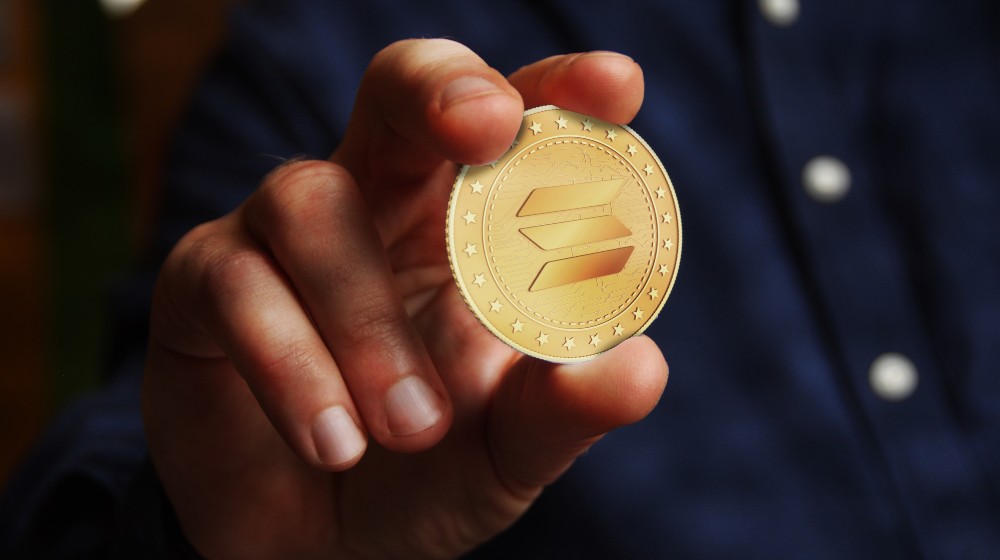Alternative Investments
Solana, The New Crypto Kid on the Block
Published
3 years agoon

If you are new to crypto, then maybe Solana has gone under your radar, but not to worry, we are here to shed some light on this fast-emerging project that is taking on the biggest names in crypto.
RELATED: Peer To Peer Cryptocurrency
Why Revix Regards Solana as the Top-Performing Cryptocurrency of 2021
Solana’s token has tripled in just a few weeks and now has more than $35bn in market value. Optimism has grown thanks to Solana's faster transaction speeds and lower transaction costs when dealing in the world of decentralized finance (DeFi) and digital collectibles — areas in which ethereum dominates.
What is Solana?
Solana is a blockchain network that seeks to develop an ecosystem of cryptocurrency-powered products and services. It is different from bitcoin but offers similar features to ethereum.
It differentiates itself from Ethereum’s network by providing faster transaction times, lower fees, and a programming capability that focuses on flexibility.
Solana can handle more than 50,000 transactions per second, more than ethereum and bitcoin combined, and at a fraction of the cost. Developers can also write and launch customizable applications in multiple programming languages on the Solana blockchain.
Sol is used to paying for executing programs and sending transactions.
So is Solana Used For Payments?
No, just as stocks in the technology sector operate differently from those in the oil and gas sector, you get cryptocurrencies that do different things.
The term cryptocurrency is confusing since there is a preconceived notion of what a currency is and what it can and cannot do. Many cryptocurrencies aim to achieve different objectives, and only a small number of them are trying to become digital cash, replacing the rand and US dollar.
Cryptocurrency projects generally fall into one of two big categories. They are either purpose-built and designed for a specific function — as bitcoin or litecoin, which was specifically designed as alternative payment systems and stores of values, or, as ethereum or Solana, they can be more open and general in their functioning and can be applied to a wide range of uses.
By acting as a sort of blockchain-based operating system for building decentralized applications — which are basically just blockchain-based versions of regular apps, like the ones you get on your phone — these cryptocurrency networks can act as a foundation for many other applications to be built on top, for example, internet-enabled email, video calls, and social media. These multipurpose cryptos are looking to achieve the same thing.
What Makes Solana Unique?
- Built to scale: Solana is built for speed and can execute more than 50,000 transactions a second. Bitcoin and ethereum process five and 15 transactions a second, respectively. Visa’s payment network is said to process more than 1,700 a second on average. Faster transaction processing speeds are necessary for projects rebuilding the financial system as we know it through decentralized blockchain-based applications.
- Ultra-low fees: Solana offers far lower fees compared with what many other similar blockchain networks are charging ethereum transaction fees are more than 200 times more expensive compared with the same transaction on the Solana network.
- Ecosystem growth: Solana’s blockchain ecosystem has grown rapidly and is seeing strong adoption. In fact, Solana has grown 130% in its projects over the past few months (up to 181 projects at the time of writing). Solana’s total value locked in smart contracts is now more than $3.5bn, growing 200% in August.
Solana’s Performance
Solana has been amassing remarkable gains over the past few months. This was partly due to a renewed non-fungible token (NFT) hype, with many NFTs now being built on the Solana network.
To understand what NFTs are, the concept of fungibility must be understood. Fungibility refers to items that are replaceable for the same item. Non-fungible thus means that it is unique and cannot be replaced with something else, as a one-of-a-kind trading card or the Mona Lisa painting. If you traded either the card or the painting, you would receive something different in return.
NFTs are thus one-of-a-kind assets in the digital world that can be bought and sold like any other piece of property. The digital tokens can be thought of as certificates of ownership for virtual assets (such as in-app items and digital art) or physical assets (such as real-life paintings and even houses).
With the NFT market hitting new highs in 2021, with more than 30 times the sales of 2020, it is clear why the blockchain networks facilitating these transactions have received increased attention.
Is Solana Still a Good Investment?
You may see this as a generational buying moment in an emerging asset class or one speculative bubble. Either way, diversification is always the smart thing to do regarding investing.
Do research on smart contracts and Solana, and form your own view on what the future holds. If you see a big future for smart contracts and blockchain technology, it would be worthwhile to include Solana in your crypto portfolio.
Where Can You Buy Solana?
Cape Town-based crypto investment platform Revix, which is backed by JSE-listed Sabvest, will be the first platform in SA to offer Solana as a stand-alone cryptocurrency investment option.
Investment Promotion
Revix is offering zero-buying fees on rand and British pound Solana purchases until September 16, 2021.
Revix now offers multiple stand-alone cryptocurrencies, from bitcoin and ethereum, to uniswap and polkadot and many in between.
Through Revix, you can also gain access to its ready-made crypto bundles, which enable you to effortlessly own an equally weighted basket of the world’s largest and, by default, most successful cryptocurrencies without having to build and manage a crypto portfolio yourself. They are like the JSE top 40 or S&P 500, but for crypto.
You Might Also Like:
- Tesla, Toyota Team up vs Ford, UAW Over Dems’ EV Tax Breaks
- COVID-19 Pushed 31 Million People Into Dire Poverty
- Crypto Trading With Smart Algo’s Trading Robots
Keep up to date with the latest finance news by following us on Facebook and Instagram.
Article Source: businesslive.co.za
You may like
-


As Bitcoin Crashes Below $40,000, Its Current 2022 Loss Is Now 14%
-


Officials Rescind LGBcoin.io’s NASCAR Sponsorship For Brandon Brown
-


Cryptocurrency w/ Edward Ongweso Jr. and Jacob Silverman
-


Rios: If You’re Planning To Invest In Crypto In 2022, It’s Too Late
-


Elon Musk Pushes Dogecoin Over Bitcoin When Buying Things
-


Bitcoin Volatility Continues, Now Trading Below $50,000
Recent Articles
- U.S. Employment Costs Surge
- UAW Strike to End Following Tentative Deal with General Motors
- Prices for Goods and Services Increase Beyond Expectations
- GDP Soars 4.7% Thanks to Rise in Consumer Spending
- New Home Sales in the U.S. Rise Amid Skyrocketing Interest Rates
- Reports: X/Twitter Shrinking Worsens Following Rebranding
- Reports: Amazon Testing Humanoid Robots for Warehouse Operations
- Elon Musk’s X/Twitter Announces Subscription Tiers



